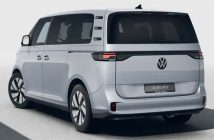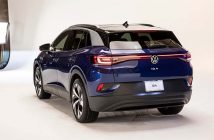+++ AUTONOMOUS driving technology promises to change how we move but it doesn’t appear that it will significantly affect insurance premiums. The switch to autonomous vehicles shouldn’t result in insurance companies becoming less profitable as drivers will continue to need coverage and new products could be introduced specifically for driverless vehicles. One potential change that could occur is who pays for the policy. Most owners pay for their insurance but in the future, automakers or technology companies could be the one footing the bill. Volvo CEO Håkan Samuelsson hinted at this possibility back in 2015 when he said the company would “accept full liability” for any accident that occurred while one its models was operating autonomously. Besides automakers potentially paying for insurance, another possible change is the introduction of new insurance products tailored specifically to autonomous vehicles. One mentioned in the article is so-called “cyber insurance” which would protect people whose vehicles were hacked. Given the growth of over-the-air updates that can significantly impact vehicle performance (the Tesla Model 3’s improved braking for example), it is possible that hacking insurance could become popular in the future. Another factor working against cheap insurance for autonomous vehicles is the fact that they are equipped with numerous cameras, sensors and computers. The technology might reduce the number of accidents that occur but when one does, the insurance payout will likely be higher to cover the cost of the high-tech components. The switch to fully autonomous vehicles also won’t happen overnight so they’ll be sharing the road with ‘dumb’ vehicles driven by humans who could hit them. Technology also isn’t foolproof and this could lead to autonomous vehicles having accidents on their own. +++
+++ FORD has filed patents for a number of innovations that ought to make their vehicles even more convenient to use; but not when they’re moving. Instead, they focus on how the Blue Oval’s vehicles could be used when parked. Given Dearborn’s increased emphasis on light trucks, it should come as little surprise that the patents relate more to SUVs and pickups than normal cars. One of the patents applied for with federal authorities is for a tilting suspension system designed to enable easier access to the roof rack. Filed under the “methods and apparatus to control vehicle tilt” label, the system would lean the vehicle to one side (not unlike a kneeling bus) to bring the roof of the crossover or van closer to accessible height. Another patent is for a foldable steering wheel, which is something that automakers have been toying with for autonomous vehicles. The idea here, though, would not be to fold the steering wheel out of the way, but to collapse part of the rim and turn it into a laptop stand of sorts. That could be particularly useful in work trucks, where the cab often has to double as a mobile office when parked. Ford also recently filed patents for airbags to inflate behind the front wheels to prevent them from intruding into the passenger compartment in the event of a crash. Another application seeks to patent a curtain to drop down from the vertically opening liftgate to provide shade and privacy when parked. +++
+++ The popularity of the all-electric model has resulted in KIA deciding to kill off all internal combustion-powered variants of the Soul in Europe. Electrive reports that, last year, sales of the Soul in Europe hit 12,100 units, of which 5,400 were for the electric version. This impressive uptake has prompted the automaker to make it the only powertrain option, with the turbocharged Final Edition marking the ICE’s passing. Uptake for the Soul EV remains strong this year and in Germany, 1.899 of the 2.245 Soul models sold have been electric. Most of the Soul EVs sold in 2017 were exported as used cars to Norway to lower the marque’s average emissions in the European Union. Another promising thing for Kia is that the current Soul continues to sell well even though its life is coming to an end. In fact, a next-generation model is just around the corner and promises to arrive with a new look and, most importantly, serious changes under the skin. As a matter of fact, it is reported that the current 30 kWh battery pack will be swapped out for one with 39.2 kWh and an optional 64 kWh that’ll top out the range. +++
+++ MERCEDES has updated the SLC with more power and additional equipment for the 2019 model year. The range-topping 43 AMG carries on with a twin-turbocharged 3.0-liter V6 engine but the Germans bumped its output up from 367 to 390 horsepower. Mercedes hasn’t provided a torque figure yet, and it hasn’t released performance specifications. To add context, the current SLC 43 AMG takes 4.7 seconds to reach 100 km/h from a stop. The German company expanded the 43’s list of standard features with dual-zone climate control, LED headlights, and adaptive high beam assist. Finally, SLC buyers have a few new standalone options to choose from. The list includes blind spot assist, a better sound system made by Harman/Kardon, an analog clock positioned on top of the dashboard, ambient lighting, and Mercedes’ Parktronic technology. The 2019 modelyear Mercedes SLC will reach showrooms in the coming months. Look for a pricing announcement in the near future. The SLC might not remain in the Mercedes line-up for much longer. It’s fast approaching the end of its life cycle, and company boss Tobias Moers recently revealed officials haven’t decided whether to replace it. Insiders suggest it will get axed and replaced by a standalone model designed by AMG. +++
+++ The next-generation NISSAN Qashqai, due in showrooms in 2020, will feature 2 new hybrid systems plus a sleek design makeover. However, there won’t be a pure-electric version, while Nissan is also considering ditching diesel from what is currently the UK’s third best-selling car. Full electric power will be reserved for a separate SUV model based on an all-new platform. It’s likely to underpin a whole family of electric cars spanning B, C and D segments (everything from Juke to X-Trail) for Nissan and its Alliance partners Renault and Mitsubishi. The next Qashqai will be based on a new version of the Alliance’s CMF (Common Module Family) platform architecture that can accommodate hybrid tech. Ponz Pandikuthira, vice-president of product planning for Nissan Europe, said: “We are looking at a new platform because that’s what’s best to accommodate electrified technologies. It probably won’t include full electrification, because that’s a complete tear-up and the investment required for that would be considerably higher”. The Qashqai is likely to offer 2 forms of hybrid: one featuring Nissan’s innovative ePower system, plus plug-in hybrid power from Mitsubishi. An ePower engine can currently be found in the Nissan Note in Japan, where it’s proven popular. Its series hybrid system features a petrol engine that works as a generator to charge a battery that then powers an e-motor. “We’re investigating the ePower technology for Europe”, explained Pandikuthira. “The biggest difference when you do these onboard generator vehicles is highway driving; in Japan, they typically don’t go above 90 km/h. Here in Europe, you do 130 km/h on a regular basis. At those speeds, you end up depleting the battery very quickly, so the range extender has to work really hard to keep the energy going and then it goes out of its range of efficiency”. Plug-in hybrid tech will come from Mitsubishi, widely accepted as a leader in the technology, thanks in part to the sophisticated ECUs from Mitsubishi Electronics. Unlike rivals, Mitsubishi has already managed to tweak its Outlander PHEV to produce figures below 50 g/km CO2 under the new, tighter WLTP testing regime. It’s expected the new Qashqai will offer similar figures. Pandikuthira isn’t convinced about the benefits of plug-in hybrids, however. He told us: “We’re not pursuing a big plug-in hybrid strategy. On some car lines we’ll try it out, but the business case for plug-in hybrids is not very good. For us, it’s a bridge technology for the next 2 to 4 years until battery costs drop to the point where the variable costs of making full EVs prevail”. With 2 hybrid models in the next Qashqai, insiders have hinted that it’s likely to spell the end of diesel power in Nissan’s SUV, as diesel sales are down nearly 32 % so far this year. The new car will feature more technology, with updates to the ProPilot autonomous systems and greater connectivity. Regarding the styling of the next Qashqai, I expect it to adopt a revolutionary new look, but it isn’t expected to get any bigger, with Pandikuthira saying: “You’ll notice with the last Qashqai, we left it at 4.4 metres. We didn’t grow it into a big, bloated vehicle”. Following the next Qashqai into dealers will be Nissan’s pure-electric SUV. Pandikuthira added: “When you develop an electric car from the ground up to be electric, you make fundamentally different choices to make a more efficient electric car. If we took a Qashqai and made it electric, which we could, you introduce compromises. It will neither be an efficient internal combustion-engined car even if it were a hybrid, nor would it be the best electric vehicle”. +++
+++ OPEL has ended production of its Zafira and Astra GTC models following low sales, driven by growing demand for SUV alternatives. A brand spokesman told that the 7-seat Zafira, which has been on sale since 2011, was hit by “a significant move away from MPVs and the growing popularity of SUVs”. The 3-door, Astra-based GTC has also fallen as SUV demand rises, with Opel’s spokesman telling that the 7-year-old model’s “business case is no longer viable” due to “the rise in popularity of smaller SUV models”. The spokesman said the GTC, which departs at the end of its product lifecycle, sold in 40,000 units across Europe, “so it was highly successful when there was demand for 3-door coupés”. Although production has ended, existing stocks mean a limited supply of Zafiras and GTCs are still available. Opel won’t produce another version of the GTC, with the latest 5-door Astra set to remain exclusively so. The 7-seat Zafira also won’t be directly replaced, although the 7-seat MPV void will be filled later this year when a new Combo Life launches. That car will come available in 5 and 7-seater forms and take the form of a conventional MPV. Consumer demand for SUVs has resulted in Opel’s line-up growing to feature 5 jacked up models. This includes the urban crossover Karl Rocks, the Crossland X, the Mokka X and the Grandland X, as well as a rugged stationwagon in the form of the Insignia Country Tourer. Opel’s spokesman said this growing range of high-riding models provides “a breadth of choice for SUV buyers, many of whom will have migrated from the MPV sector to the detriment of the Zafira”. Opel’s range changes reflect the plans of its parent company, the PSA Group, which is also adjusting the line-ups of its Citroën, DS and Peugeot brands to include more high-riding cars. The group’s brands will all soon introduce new electrified cars to cater to the growing demand for low-emission vehicles. Opel’s entry into this foray will be the recently confirmed eCorsa. +++
+++ RENAULT boss Carlos Ghosn has told that he’s likely to step down as CEO of the French automaker before the end of his term is in 2022. The 64-year old executive will however stay on as chairman of Renault, while moving forward as CEO and chairman of the Renault-Nissan-Mitsubishi alliance. Renault has yet to offer an official comment on the matter. “You can suspect before 2022 I will stop being CEO of Renault”, said Ghosn during an interview. Ghosn is currently focused on strengthening the relationship between Nissan and Renault and better-prepare the automakers for the current industry shift towards full electric and self-driving vehicles. To focus on this, in 2017 he handed over the day-to-day running of Nissan to Hiroto Saikawa. Of course, this isn’t the first time Ghosn has hinted at assuming a different role. Back in 2012, he stated that he didn’t want to continue doing this into his 60s, while at the start of this year, he alluded to stepping down as Renault CEO during a hearing on industry policy, saying that managing three major companies wasn’t “sustainable”. Last September, the alliance unveiled a 2022 mid-term plan targeting increasing annual synergies of more than 10 billion euros; a significant increase from 5 billion in 2016. Moving forward, current Renault chief operating officer Thierry Bollore could be the one tasked with CEO duties once Ghosn steps down. +++
+++ European sales of small SUV models in 2018 are poised to surge beyond the segment’s typically strong growth, as new models persuade consumers to switch from traditional hatchbacks at a faster rate. Analyst firm LMC Automotive expects an additional 400,000 sales to be tacked on to last year’s 1.4 million in the region as new small SUVs from Volkswagen Group, Citroën and Opel each look set to break the 100,000 sales mark in 2018. In the first 3 months, the Volkswagen T-Roc, Citroën C3 Aircross and Opel Crossland X entered the charts in 6th, 7th and 8th places, respectively, each reaching sales of more than 25,000 during the quarter. Meanwhile, the heavily revised Dacia Duster leapfrogged the Opel Mokka X to take third place with sales of 46,571, behind the leading Renault Captur and second place Peugeot 2008. Just outside the top10, the recently launched Seat Arona posted strong sales of 17.696 to put it just ahead of 2 more newcomers, the Kia Stonic and Hyundai Kona. “The market has skyrocketed”, Ponz Pandikuthira, head of product planning for Nissan Europe, told. “We are projecting for the next 4 years it will grow like crazy, about 40 % up, with all kinds of nameplates coming in”. The appeal of the cars (with their compact dimensions, high seating position and youthful image) will push the market to just shy of 2 million in 2019 and up to 2.3 million in 2022, LMC Automotive predicts. “The automakers are committed to flood the market” to meet demand, said Sammy Chan, an LMC analyst. New models that are set to shake up the segment, according to LMC, include the Volkswagen T-Cross; the long-awaited small SUV that will sit beneath its larger T-Roc stablemate when it arrives this year. Next year Skoda will launch its small SUV based on the Vision X concept seen at this year’s Geneva auto show. It will replace the discontinued Yeti. Skoda says it has “ambitious” sales targets for the car, which (like the Seat Arona) is built on the MQB A0 platform of parent company VW Group. One of the most important models to launch will be a Fiesta-based Ford SUV, likely in 2020, according to LMC Automotive. Ford misjudged consumer tastes in Europe with the 2014 launch of the EcoSport, which was largely unchanged from the model developed for Brazil. Ford, however, has since overhauled the EcoSport to better suit more demanding European customers and recently switched production to Romania from India. As a result, sales of the EcoSport rose 29 % in the first quarter to put it 9th in the segment’s rankings. For the next model, Ford will be hoping for a repeat of the dominance the automaker enjoys with the Fiesta, which is Europe’s No. 3-selling small car. Nissan arguably defined the sector when it launched the Juke in 2010. But the aging model suffered the biggest decline of any of the models in the top10 during the first quarter, falling to 10th place from 5th during the same period last year with sales down 27 %. A new Juke is expected soon, possibly next year, which will broaden the appeal of the car. “Customers are much more demanding”, Nissan’s Pandikuthira said. “For the next Juke, we’re going to cater for a wider audience than we are used to”. He promised the new Juke still will have its “edgy” appeal but won’t be quite so polarizing in its looks. It will also have more space and “much more efficient” engines, Pandikuthira said. Some manufacturers plan to double up in the segment, as Volkswagen is doing. LMC predicts that Hyundai and Kia will launch a second version of the Kona and Stonic, respectively, in 2019, while Renault plans a second Captur to be made at its plant in Valladolid, Spain, starting next year. The desire to launch more models is driven by their ability to generate profit. “They’re mostly based on the regular subcompacts but selling for higher prices; that’s a crucial factor”, said Felipe Munoz, global analyst for JATO Dynamics. The average selling price for a small SUV in Germany is 23,386 euros, compared with 17,317 for a small hatchback, according to first-quarter data from JATO. The increasing unpopularity of diesel is not affecting the soaring demand for small SUVs. Instead, buyers are switching to gasoline. In 2013, diesel’s share of the segment was 56 %. In the first quarter this year, that number had fallen to 33 %, according JATO Dynamics. Alternative-fuel vehicles accounted for just 0.4 % of sales in the first 3 months. Despite the off-road image the cars borrow from, the segment is almost all 2-wheel drive. Just 12 % of models sold in the first quarter were all-wheel drive, a drop from last year. +++
+++ In the UNITED STATES , Buick buyers may be in for some sticker shock after President Donald Trump’s tariffs on $50 billion in Chinese imports. The General Motors brand’s Envision SUV, which starts at $31,995, is among the handful of autos imported into the U.S. from China. With the Trump administration planning to impose 25 % duties on products including motor vehicles, each of the SUVs could be subject to levies of about $8,000. A General Motors spokesman confirmed that the Envision will likely be affected by the tariffs and didn’t have immediate comment. The automaker sold 41,040 units in 2018, the Envision’s first full year in the U.S. market. By comparison, Chevrolet delivered 7 times more Equinox SUVs. Other cars potentially subject to U.S. tariff include Volvo S90 sedans, which the Chinese-owned Swedish automaker started importing to the U.S. in 2015. A spokeswoman for the company declined to comment. The U.S. imported only 58,437 passenger vehicles from China last year, a sliver of the 8.27 million shipped to America from the rest of the world, according to the Commerce Department’s International Trade Administration. +++



